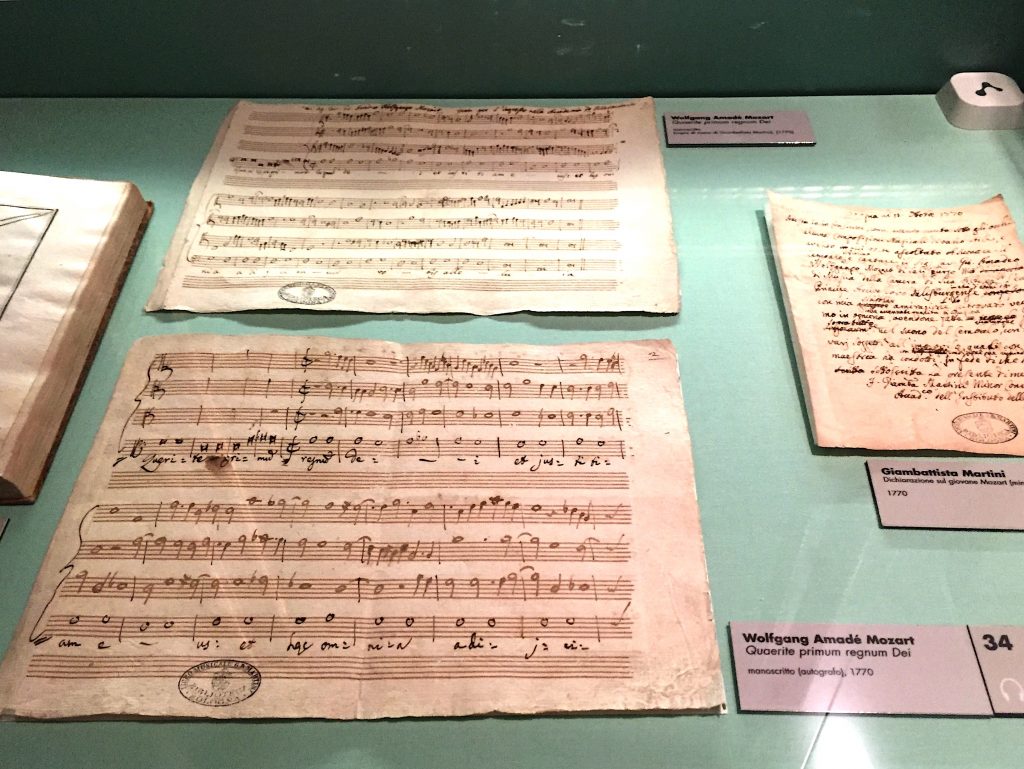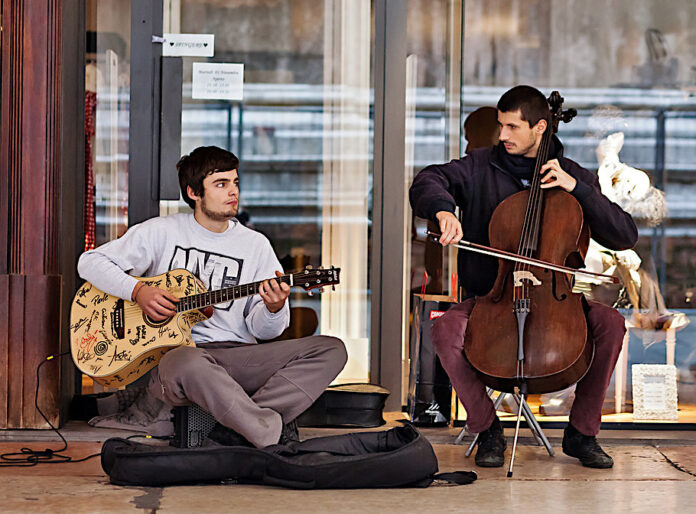Its passion for music, and nurturing of some of the world’s most renowned composers, helped Bologna become a UNESCO City of Music.
This city sings: walk down a single porticoed street, and you may well pass a street musician strumming on an acoustic guitar, catch strains of jazz drifting from a cantina and hear opera singers practicing their arias.
Bologna’s musical richness is one reason the city was in 2006 named a UNESCO City of Music – one of only two in Italy (the other is city of Pesaro, birthplace of the composer Gioachino Rossini).
“The role of UNESCO is the recognition of human achievement, something that is important for the history of music,” said Enrico Tabellini, communications chief of Bologna’s International Museum and Library of Music. “The role is to recognize that there is a creative part, and that Bologna is not just about something in a glass box to preserve.”
This ancient university city’s history of musicianship dates back to 1666, and the founding of its prestigious Academia Filarmonica. The academy, both a concert hall and place of study, hosted Mozart, Bach, Rossini and other illustrious classical composers.
From Choirs to Boy Bands
On any given night, residents can hear boy bands, visit late-night jazz clubs or take in performances of beautiful operas and choirs.
The Filarmonica continues to play an important role in Italian music. Influential in promoting Bolognese music internationally, the academy has established ties around Europe, and sends its students to play abroad, to publicize their accomplishments. Latvia and Estonia have experienced the music of Italy’s finest students, notes the president of the academy, professor Loris Azzaroni.
“Bologna has a very strong capacity for producing music,” Azzaroni said. “This power of producing music is due to the fact that it boasts a very rich past, and a very rich present. Bologna is the cradle of many music genres. It has always been at the heart of music in Italy.”
The Conservatorio Giovanni Battista Martini is an important school for aspiring musicians.
Father Giovanni Battista Martini is one of classical music’s key figures: in the 18th century, he taught Wolfgang Amadeus Mozart and Johann Sebastian Bach. Martini is considered the “Wikipedia of music in the 18th century,” for writing some of the first music encyclopedias, and “the father of all maestry” for teaching famous conductors and composers, Tabellini said.
Martini’s presence in Bologna is one of the foremost reasons UNESCO took such a keen interest in the medieval town as a global city of music, musical leaders in Bologna say. The Conservatory now hosts thousands of students from around the world, who come to study jazz, classical orchestral music and even film score composition. Most foreign students come from China and Japan.
“During the majority of the 1700’s, Bologna was the most important place in Italy to study music,” said Conservatory Vice Director Stefano Malferrari. He said the conservatory, established in 1804, was Italy’s oldest.
The Conservatory partners with Bologna’s most prominent jazz club, Cantina Bentivoglio, offering jazz students a place to play for enthusiastic crowds of all ages. Much of Bologna’s vibrant music scene is in fact student-driven.
The power of Bologna’s musical culture stems from its passion for its musical history.
The International Museum and Library of Music of Bologna, which opened in 2004, is dedicated to educating the public about Bologna’s musical life. The museum holds an impressive collection of ancient instruments, musical literature and portraits of famous composers given to Martini as gifts in exchange for music lessons. It is an awe-inspiring accumulation of the centuries of musical masterpieces and technological breakthroughs.
“There is not just one feature that makes Bologna important to music preservation,” Tabellini said. “There are a lot of pieces that make a great encyclopedic collection.”
Among the museum’s most prized holdings are Mozart’s original entrance exam compositions. There’s also the first printed book of sheet music created by moveable type. And there are artifacts of Bolognese musical milestones, like 16th century Italian printer Ottaviano Petrucci’s innovation that made it more efficient to publish sheet music.
Tabellini also ticks off a few revolutionary musical creations. The concerto — a work that features a solo instrument accompanied by an orchestra – was invented in Bologna.
Near the museum is the Libreria Musicale Ut Orpheus, a small shop stuffed with classical sheet music. Owner Dr. Antonello Lombardo collaborates with musicologists, to gather historical information, and to translate musical analysis into several languages.
“If you go to Bologna, you can look for the roots of Italian music and Italian tradition as well,” Lombardo said. “It is important to preserve classical music, because it means preserving our own history.”
He recognizes that Italian music is popular abroad. And he sees the need to translate it for foreign music lovers. “If we don’t know ourselves, and we don’t know our culture and our traditions,” he pointed out, “it is impossible to grow and jump into the future.”


